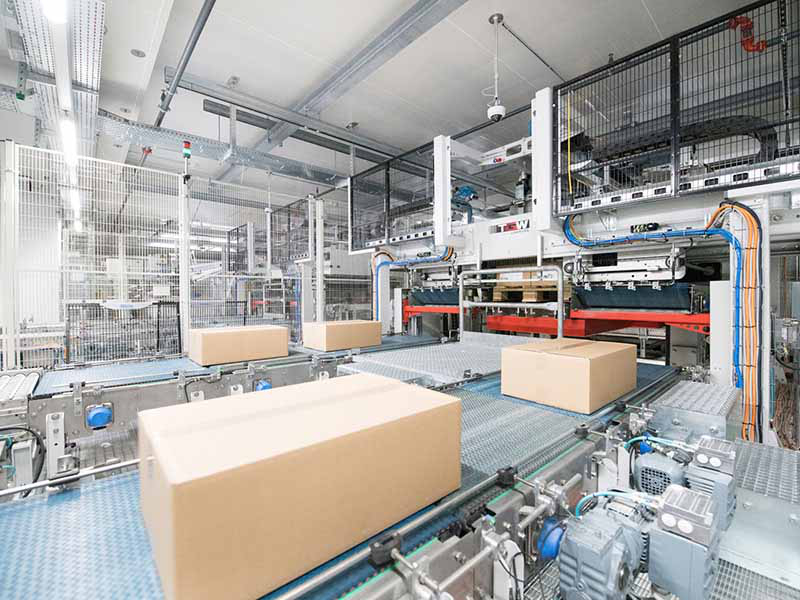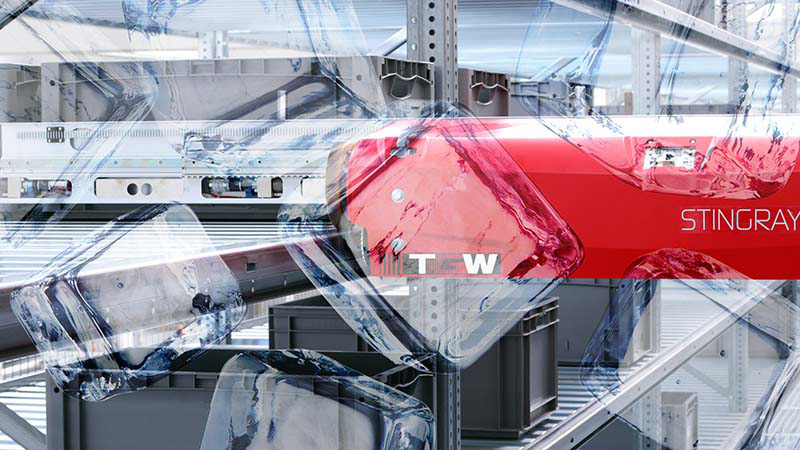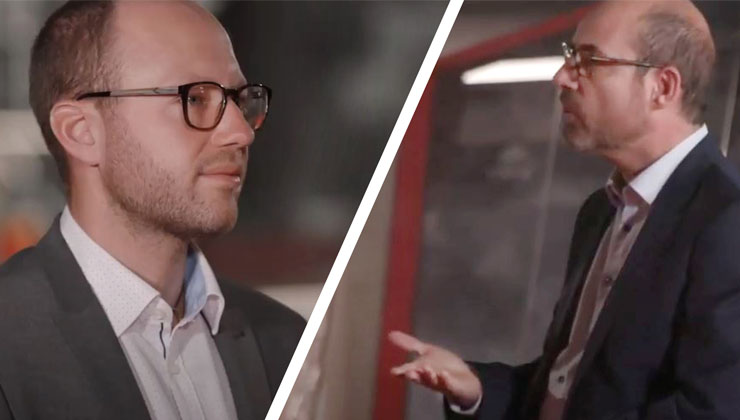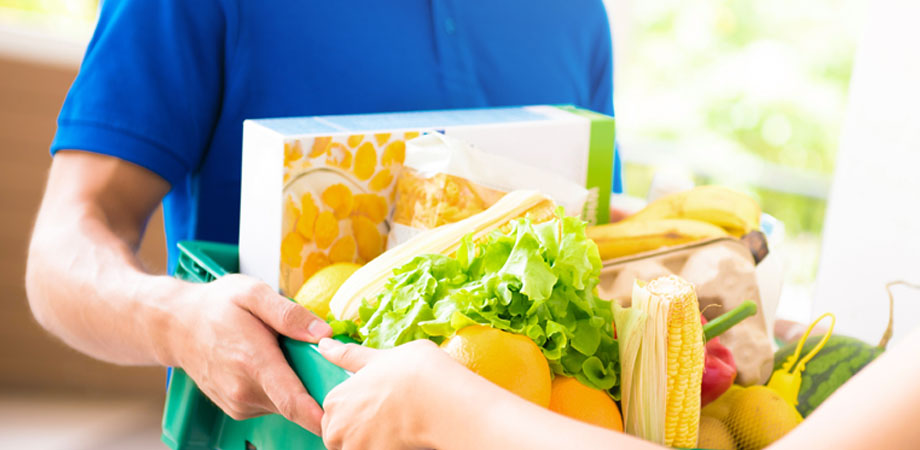- 劳动力短缺刺激需求
- 企业越来越重视可持续性和节能
- 最多可降低三分之二的能耗
(Marchtrenk, August 31, 2021) More and more companies are making use of automated freezer warehouses instead of manual ones. For an explanation, we interviewed Michael Schedlbauer, Industry Manager for Grocery at TGW Logistics Group.
How has the refrigerated logistics market developed in recent years?
Michael Schedlbauer: In 2020, the coronavirus pandemic resulted in disproportionately high growth in this segment. People cooked at home more often and bought more frozen ingredients such as vegetables or fish. At the same time, demand for convenience products grew. In the US, for example, the frozen food sector grew by 20 percent. Numbers from Germany also reflect this trend. The Verband Deutscher Kühlhäuser und Kühllogistikunternehmen (VDKL), a German trade association of refrigerated warehouses and refrigerated logistics companies, reports that in 2020, its refrigerated warehouse members had an average total utilisation of 81.4 percent, making them 1.3 percent more full than they were as of 2019 (80.1 percent). Overall, they were more fully stocked than at any time in the last eighteen years.
This sounds like a crisis-resistant logistics segment.
Indeed. We are currently seeing many companies and investors make investments in this area. For one thing, interest rates are low. Secondly, whether COVID cases go up or down, people will always need to eat and drink. This makes the industry very stable and capable of withstanding external influences. Therefore, long-term investments in new, automated warehouse structures are worthwhile.
What did the situation look like before the COVID-19 outbreak?
The market has grown continuously in the past decade, with the players expanding their capacities continuously - including retailers and contract logistics companies alike. TGW, for example, recently completed a project with Dutch service provider NewCold, which works for a renowned food and beverage producer. In addition, the COOP central warehouse in Switzerland went online successfully. Two trends are currently shaping the face of grocery retail: centralisation and insourcing. The COOP project in Schafisheim is a good reflection of the former. The Swiss company has centralised its freezer logistics – and merged three regional distribution centres into one. Moreover, this facility is also the regional warehouse for fresh goods for Northeast Switzerland. As a result, this building includes multiple temperature zones in its 240,000 square metres of total space.

Many people think that automation means investing large sums of money.
Looking at the big picture – Total Cost of Ownership – reveals a different situation. Warehouse automation is particularly valuable in freezer logistics. Stringent requirements exist in food retailing. The pick quality must be perfect, the deliveries must arrive on time and the refrigeration chain must be unbroken. Companies must be able to prove this without any gaps and at the touch of a button. Being less dependent on the labour market also provides additional peace of mind to many of those responsible for logistics. Minimised loss of goods – for example due to damage from forklifts – has a further positive effect on the business case.
How important is transparency?
Let's take a look at product recalls, for example. In a worst-case scenario, both the producer and the dealer must be able to – with a few clicks – identify which lots are affected. The only way for companies to gain this transparency is digitalisation and automation in the supply chain. In addition, an increasing number of food and beverage producers are offering their customers the ability to track the complete value chain – for example, tracking fish from the time they are caught to the freezer case. This is also enabled by the IT used in automated warehouse solutions. In addition to digitalisation, sustainability and labour scarcity are the foremost drivers of new automation projects.
Why is sustainability important?
In these times of increasingly severe climate change, many companies are becoming aware of their responsibility to conserve resources. This is also gaining importance in communication with customers, as is demonstrated by COOP's "Deeds instead of words" campaign, which now includes 400 specific measures. Many companies have pledged to implement ambitious goals for cutting their energy consumption and/or emissions or making their business completely CO2-neutral. For this purpose, they carefully examine each and every stone in the supply chain mosaic.
For example, by centralising its distribution centres in a single, innovative facility, COOP is able to reduce carbon dioxide emissions by up to 10,000 tonnes a year. An old manual freezer warehouse refrigerated to -25 degrees Celsius uses significantly more energy than a new, automated and volume-optimised facility with the same output. Energy costs keep going up, meaning that one reason sustainability is attractive is cost-effectiveness.

Why is the labour shortage an important topic for the industry?
In many cases, this is the decisive argument when making an investment. In Western Europe, finding employees to staff freezer warehouses is nearly impossible – to say nothing of management employees in the office. There are some facilities in Western Europe that are almost entirely staffed with expatriates from Ukraine or other distant lands. Working conditions are tough in the ice-cold temperatures. Employee turnover is high, despite the substantial wage premiums paid in many countries. It is becoming increasingly difficult to find, train and retain employees. Another complication is the amount of prescribed breaks, which means the workers are in the facility for a relatively short time compared to warehouses operated at room temperature. In accordance with DIN 33403-5 in Germany, a 30-minute break is prescribed after 90 minutes of work. This is absolutely necessary for the work to be feasible and bearable over the long term. However, it makes the business case for a manually operated refrigerated warehouse significantly weaker than the case for a non-refrigerated warehouse.
How is the work situation in an automated refrigerated warehouse improved?
Automation replaces hard physical work at below-freezing temperatures. At the same time, the solution is designed such that the remaining tasks can be shifted to warmer temperature zones of between -5 and -2 degrees Celsius. These processes include shipping and receiving, order picking and palletising/depalletising. The last two processes can also be automated using robots. At the end of the day, automation creates jobs with higher qualifications – in the control centre, for example.
Besides the labour shortage, what other arguments are there for automated refrigerated warehouses?
Experience has shown that productivity can be doubled in some cases. Two other benefits are the higher process quality and the energy savings mentioned earlier. These savings can be achieved when using an automated facility with a much more compact design than a manual solution. It's possible to save up to two thirds of the energy used for cooling here.
What is the best automation strategy?
Currently, almost all facilities are designed to have shuttle systems. Compared to storage and retrieval machines, they offer the same storage and retrieval performance with significantly fewer aisles, which saves on volume. Storage and retrieval machines are typically suitable in small systems with low output.
What means are used to ensure that shuttles work at -25 degrees Celsius?
TGW uses the latest robot and drive technology. Our solutions can be used in any application in the temperature range between -30 and +40 degrees Celsius. For a shuttle in the freezer area, we exchange just three components for optimum operation and adapt the lubricant.

What does the ideal process for a refrigerated warehouse look like?
Our standard solution, which is adapted specifically to the customer, consists of several modules. The process begins at goods receipt. The palletised goods are inspected, given a label and fed into the high-bay warehouse at a temperature of -25 degrees Celsius. For order picking, goods are retrieved and depalletised as required, while pallets with remaining quantities are returned to storage. The depalletised units are transferred to a tray and put into storage in the shuttle system. For picking according to the goods-to-robot principle, the required items are removed from storage, with the trays being sequenced and unloaded as required. Palletising is automated using Autostax robots. The articles are arranged on the customer's load carrier - usually a pallet or rolling cart - according to various criteria. The following prioritisation is the rule: stability of the pallet, optimisation of the volume and store-oriented arrangement based on goods families for fast stocking in the store. The customer load carriers are then secured automatically and made available in the correct sequence for transport by lorry in the outgoing goods buffer.
Subject: Energy efficiency. How can significant savings be attained?
The basic principle for minimising energy consumption: Both the volume being cooled and the building footprint must be as small as possible. Ideally, the solution is erected in a building with a maximum height of 40 metres allowed in the construction area. This keeps the footprint small and largely prevents energy losses caused by the roof surfaces.
Good building planning is of little use if the execution is poor…
Correct. Important prerequisites for high energy savings are a tightly sealed system, outstanding insulation and good airlocks and doors. In addition, dehumidifiers are required for air treatment. The advantages of automated warehouses are that there is no need for gate openings for forklift traffic and that people and lighting - both sources of heat - can be reduced to a minimum. TGW also makes use of energy-saving solutions. Shuttle lifts and KingDrive® conveyor systems have technologies for energy recuperation, while the shuttles themselves are driven with innovative SuperCaps.




